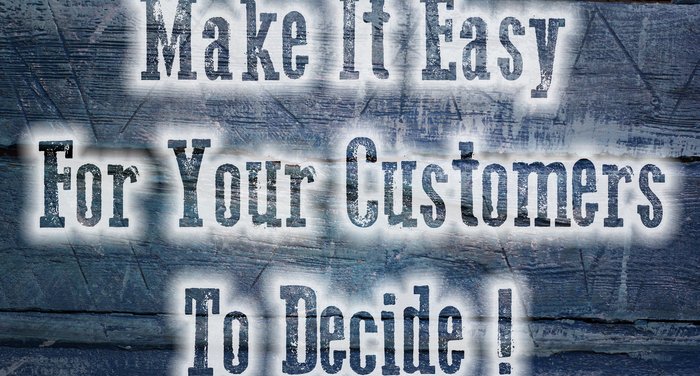You want your Customers to buy from you – obviously! Therefore it is critical that you make things easy for them. So how do we do that? Well firstly you need to understand what easy means from a more psychological perspective.
In a previous blog we learnt that we all have two systems of thinking: our intuitive thinking and our rational thinking. Our intuitive thinking (Intuitive System) is fast and is based on instinct and emotion. Rational thinking (Rational System) is slower and is based on logic and reasoning. In his book Thinking Fast and Slow, Professor and Nobel Prize winning economist Daniel Kahneman explained that we all use our fast thinking way more than our slow thinking. Why? Because it’s easier and doesn’t take so much energy as rational thinking does.
In the book I have just written with Professor Ryan Hamilton of Emory University called The Intuitive Customer: 7 imperatives for moving your Customer Experience to the next level, we discuss how important easy is to customers’ behavior. It led to our fifth imperative, which is:
Imperative 5: Uncover the hidden causes and unintended consequences of customers wanting things to be easy
We want to rely on the Intuitive System whenever we can because using the Rational System is exhausting. So, we decide to do something based on our emotions (Intuitive System) and then tidy up afterward with the relatively easy task justifying our choice (Rational System).
People also employ heuristics, which is another word for problem-solving with a practical method that isn’t perfect, but is good enough. Look at them as a thinking shortcut.
Let me give you an example. Pretend you were trying to decide between taking a train on a trip or flying to the destination. During your decision-making process, you remember several times when the train was delayed, and you were late for your arrival. Moreover, the last three times you went by train the bathroom was intolerably disgusting, and you decided you’d rather wait it out…uncomfortably, I might add. So you decide to fly instead.
This example is a conventional heuristic called the availability heuristic. This mental short-cut is in play when you recall several examples from your memory that aid in a decision. These examples are quickly accessed and relevant to your decision, leading you to believe that because they were so readily accessed they are predictive of the future. In other words, the fact that you remembered them so easily, it will probably be correct the next time, too.
Another common way we take a mental short-cut is with the representative heuristic. In this type, you compare traits of someone you see to a personal archetype. For example, you meet someone who eats vegan, so you assume they also exercise on a regular basis because your sister is a vegan and she is (obnoxiously) health conscious and exercises all the time.
Heuristics deliver decisions that are pretty good most of the time. That’s one of the many reasons we all use them so often. After all, trains are often late and the bathrooms, well, let’s just say sometimes it is better to wait. Also, I haven’t met many vegans that look like they are courting Type 2 diabetes, either.
Some heuristics we use as customers on a regular basis. We have been doing it for years. When you recognize them in action, you can use what you know about people’s thinking and decision-making to make it easy for them in your Customer Experience. When we work with our clients in the Customer Experience Consultancy side of Beyond Philosophy, we share these heuristics and help our clients design an experience that appeals to their customers’ need for easy.
We want habit!
We rely on our automatic or intuitive thinking whenever possible because thinking is exhausting. Easy is important to the Intuitive Customer, but few organizations know what “easy” means to customers.
However, the sooner you can find a way to make it easy for your customers, the sooner you are going to find a great way to make it easy for them to come back for more.
To learn more about these fascinating and compelling concepts for yourself and business, please register for our latest book and FREE book launch webinar: The Intuitive Customer: 7 Imperatives for moving your Customer Experience to the next level, (Palgrave Macmillan, 2016).
If you enjoyed this post, you might be interested in the following blogs:
Beware – The Internet is Affecting Your Customers’ Behavior
Training Employees on Nonverbal Clues
‘Top 50 Marketing Thought Leader’ Reveals Latest Trend
Colin Shaw is the founder and CEO of Beyond Philosophy, one of the world’s leading Customer experience consultancy & training organizations. Colin is an international author of five bestselling books and an engaging keynote speaker.
Follow Colin Shaw on Twitter @ColinShaw_CX


